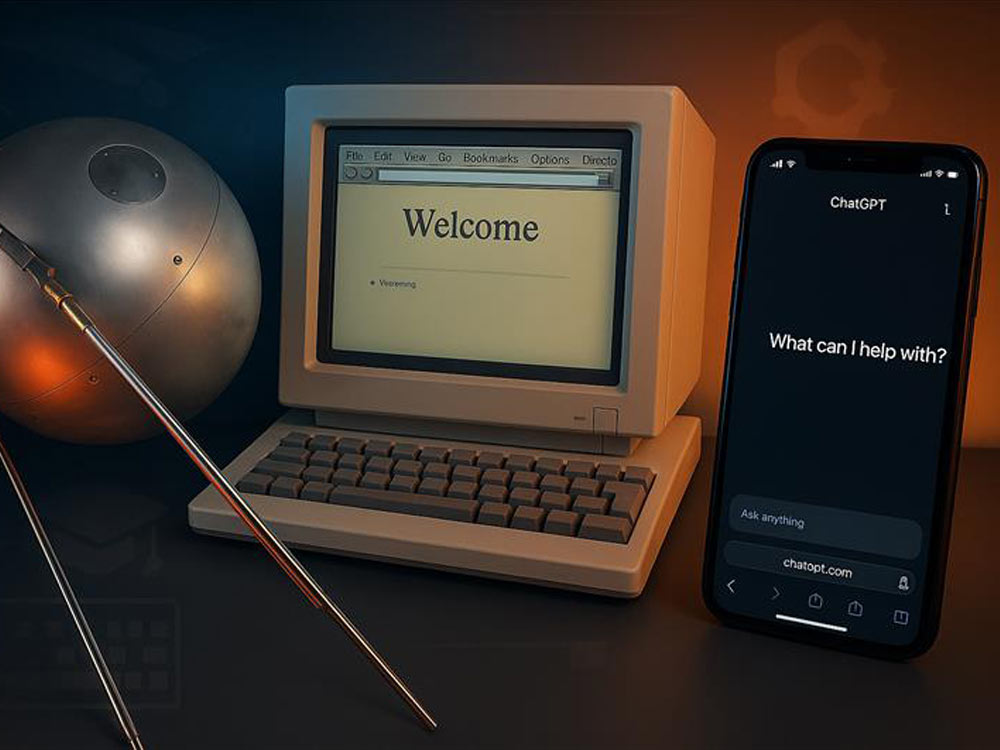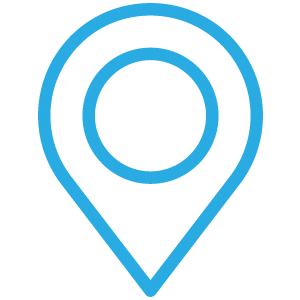
By Dr. Keith A. Morneau, Dean of Cybersecurity
Education has faced moments of disruption before. In 1957, the Soviet launch of Sputnik forced the United States to rethink how it prepared scientists, engineers, and technologists. In the 1990s, the internet arrived, and with it came the realization that knowledge and information would no longer be limited to textbooks and lectures.
Both moments reshaped how and what we teach. Today, artificial intelligence is our next inflection point.
From the Information Age to the AI Age
When the internet became widely accessible through browsers and search engines, it transformed how people learned, worked, and created. Entire industries, from retail to finance to education, were redefined.
AI is bringing about that same level of disruption, only faster. Tools like ChatGPT have made advanced capabilities available to anyone, not just experts. The difference is profound: while the internet connected us to information, AI connects us to intelligence and decision-making.
That shift demands new skills: prompt engineering, critical thinking, and ethical reasoning. It also calls for new roles. In the internet age, learners moved from consumers to creators. In the AI age, educators mentor and guide students to think critically, ethically, and creatively in an AI-rich environment.
What We Learned from the Space Race
Sputnik sparked urgency. It drove the U.S. to expand science and math education, but it also pushed higher education away from applied apprenticeship models toward more standardized, theory-heavy classrooms. The reason was simple: national leaders believed that academic research and theoretical knowledge would fuel technological superiority.
That shift helped fuel America’s research dominance, but it also created a skills gap, especially in fields that require practical experience. We are still living with that gap today.
AI gives us an opportunity to rebalance. Instead of focusing only on what students know, it allows us to emphasize how they think and what they can do with their knowledge, augmented by intelligent systems. In this way, AI can bring back the best of both worlds: rigorous academic knowledge paired with personalized coaching, simulation-based practice, and one-on-one feedback.
What Higher Education Institutions Are Missing About AI
Too many colleges see AI as an add-on. They introduce a course or a workshop but leave the rest of their model untouched. AI is not an accessory. It is an enabler.
Studies suggest that AI can boost productivity by as much as 40 percent. That is not a marginal gain, it is transformational. AI can serve as a tutor that gives immediate feedback, a coach that helps close skill gaps, and a mentor that amplifies the role of faculty rather than replacing it.
In my white paper, Learning to Become a Professional in the Age of AI, I explore how this shift calls for more than technical skills. Professionalism in the AI era also means cultivating tacit knowledge, things like judgment, humility, and lifelong learning, that machines cannot replicate.
This requires institutions to rethink curriculum design, faculty roles, and student support models. Those who hesitate risk repeating the mistakes of the internet era, when education lagged far behind the pace of change.
Applying AI in Cybersecurity and Beyond
Cybersecurity roles are mission-critical, and many employers want new hires to have certifications and practical experience before taking on frontline responsibilities. That is why our programs are designed to go beyond the classroom. We integrate industry-recognized certifications, real-world capstone projects modeled on Security Operations Centers, and apprenticeship opportunities where students earn while they learn.
Our first registered apprenticeship in cybersecurity has shown what is possible when education and industry align. Students who participate gain paid, real-world experience while completing their degrees, often entering the workforce with both a diploma and a strong professional foundation. Employers benefit too, as apprentices arrive with hands-on training that shortens onboarding and strengthens long-term retention.
The challenge is that apprenticeship programs require deep employer commitment, and not every organization is ready to take that step. While our program is still small, its outcomes point toward what could be achieved if more industries embraced this model.
Beyond cybersecurity, apprenticeships could help close talent gaps in other high-demand fields like healthcare technology, AI, and advanced manufacturing.
The goal is not simply to graduate students with knowledge but to prepare them as professionals who can contribute from day one. Apprenticeships are one way of bridging that gap.
The Future of AI in Higher Education
In my work, I see both the resistance and the opportunity. Faculty pushback is real, and AI models change every few months. But the upside is undeniable. AI has the power to make education more personal, more responsive, and more aligned with the real needs of employers.
History shows us that disruption rewards those who act early. AI is not a future challenge, it is here now. The question is whether higher education will adapt with urgency, or once again risk being left behind.
About the Author: Keith A. Morneau
Dr. Morneau is an experienced cybersecurity professional and the current Dean of Computer and Information Science at ECPI University. He has over 20 years of experience in cybersecurity education and has helped ECPI University become a National Center of Academic Excellence in Cyber Defense Education. Dr. Morneau is also an ABET CAC Commissioner and Team Chair for cyber programs and has secured several grants and published papers to advance cybersecurity education. His research interests focus on workforce issues and bridging the skills gap in cybersecurity professions.

